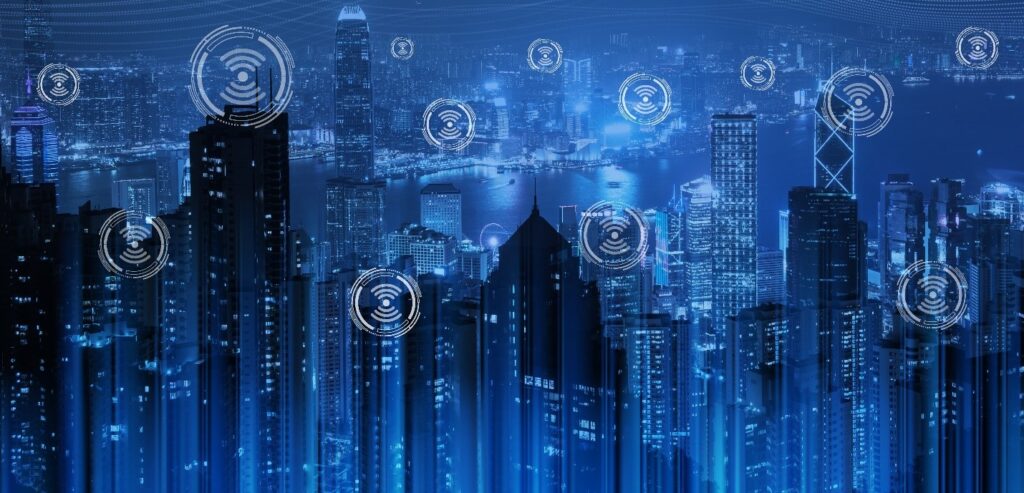Understanding the differences between Wi-Fi standards can help you make the right decision.
–Lee Curling
Get ready for the incoming wave of Wi-Fi 7 (802.11be) marketing. The messages will be loud and prominent, and they’ll insist that you need to upgrade NOW!
“Marketing through FUD” (Fear, Uncertainty, and Doubt) will be the order of the day.
Of course, there’s a BIG element of truth behind the looming wave; the ever-evolving wireless networking standards play a crucial role in determining the quality of our internet experience. Wi-Fi 6E (802.1X), the current standard, allowed for much faster and more efficient connections. With the official release of Wi-Fi 7 on January 8, 2024, many are eager to explore its advantages over the previous standard, with vendors busily promoting new Wi-Fi 7-compliant products. But before committing to upgrade to the latest and greatest, organizations should understand the current wireless-network landscape and the differences between Wi-Fi 6E and Wi-Fi 7.
The Evolution from Wi-Fi 5 to Wi-Fi 7
The advent of Wi-Fi 6 brought significant speed improvements over its 801.11AC “Wi-Fi 5” predecessor, with features like Orthogonal Frequency Division Multiple Access (OFDMA) and Basic Service Set (BSS) Coloring.
The current Wi-Fi 6E standard added support for the 6 GHz radio band, which opened up new channels to avoid congestion and increase performance while providing a maximum transfer speed of around 9 Gbps.
Wi-Fi 7, on the other hand, can reach speeds of up to 46 Gbps—five times the rate of Wi-Fi 6E. It also introduces techniques such as Multi-User Multiple Input Multiple Output (MU-MIMO) enhancements and makes more robust use of frequency bands.
Wi-Fi 7 increases the number of spatial streams from 8 to 16, doubling the theoretical physical transmission rate. It also introduces a more flexible resource unit (RU) allocation method that provides more efficient channel utilization, making it even more valuable in scenarios where multiple devices are competing for bandwidth.
Certifications and the Device Landscape
While the Wi-Fi 7 specification has been officially released, few devices have undergone the Wi-Fi 7 CERTIFIED program as of this writing. This scarcity of certified devices means that users are unlikely to experience the full spectrum of Wi-Fi 7’s capabilities, as prerelease vendors may only have implemented a subset of the specification’s features. Beware of vendors selling pre-standard devices; if these devices are not fully standards-compliant, you could face compatibility issues and suboptimal performance.
On the mobile client front, The iPhone 15 Pro supports Wi-Fi 6E, while the remainder of the Apple phone lineup supports Wi-Fi 6. There is speculation that the iPhone 16 Pro will support Wi-Fi 7, but it is still just speculation, and it’s a year away(1). Some Android devices are shipping with Wi-Fi 7-capable hardware, but that doesn’t mean they fully support Wi-Fi 7 just yet.
Let’s address the reality behind all these numbers.
Upgrading: Is It Necessary?
1. Everyday Usage:
For typical home and office users engaged in web browsing, video streaming, and regular online activities, Wi-Fi 6 already provides a sufficiently robust and speedy connection. For those users, the perceived improvement in day-to-day performance might not be significant enough to justify an upgrade to Wi-Fi 7.
When doing a speed test to the internet, I routinely get download speeds of about 700Mbs with a Wi-Fi 6 client and my Wi-Fi 6 APs; however, I rarely get that speed when actually using the internet due to a number of external factors such as website or download-bandwidth limits, route congestion, and general internet performance.

2. Specific Use Cases:
Wi-Fi 7’s advanced features are best suited to such uses as ultra-high-definition video streaming, augmented reality (AR), virtual reality (VR), and Mixed Reality (MR)(2). If these are not integral to your requirements, the benefits will not justify the upgrade. For example, Wi-Fi 6 handles the current generation of consumer VR systems without issue. Now, if you wanted to have a VR “LAN Party” at your house, that could certainly justify the adoption of Wi-Fi 7. Even the next-generation televisions with 8K resolution will require less than 200Mbs from streaming services, which is well within the Wi-Fi 6 performance curve.
If you are responsible for a high-density wireless location—such as an arena setting that supports concerts or sporting events—then Wi-Fi 7 would be a great choice. In the short term, however, your customers’ devices will still be unable to access the optimizations built into Wi-Fi 7.
3. Device Compatibility:
Consider the devices you currently own. Few devices are Wi-Fi 7 certified at the moment, and the market is flooded with pre-standard devices. As the standard becomes more widely adopted, device compatibility will increase, making the upgrade more significant.
4. Cost Consideration:
Upgrading networking hardware to accommodate Wi-Fi 7 may come with a hefty price tag. Remember that the upgrade needs to be on both the access point and the client side. Given the current device landscape and the improvements that Wi-Fi 7 offers, you’ll have to decide when the investment becomes justifiable.
The Wrap-Up
The release of Wi-Fi 7 adds a new dimension to wireless connectivity with valuable, long-term promise. However, with the limited availability of certified devices and the presence of pre-standard offerings in the market, caution is advised. Assess whether the specific features of Wi-Fi 7 align with your requirements and whether the current device landscape supports a seamless transition. As technology evolves, so will the necessity for upgrades, but for now, it’s essential to make informed choices based on the existing realities of the Wi-Fi 7 ecosystem.
| Wi-Fi 6 vs Wi-Fi 6E vs Wi-Fi 7 | |||
| Wi-Fi-6 | Wi-Fi 6E | Wi-Fi 7 | |
| IEEE Standard | 802.11ax | 802.11ax | 802.11be |
| Wireless Bands | 2.4GHz, 5GHz | 2.4GHz, 5GHz, 6GHz | 2.4GHz, 5GHz, 6GHz |
| Maximum Spatial Streams | 8 | 8 | 16 |
| Maximum Bandwidth per Stream | 1.2 Gbps | 1.2 Gbps | 2.4 Gbps |
| Theoretical Maximum Data Rate | 9.6 Gbps | 9.6 Gbps | 46 Gbps |
Resources:
- iPhone 16 Pro rumors: faster 5G modem, Wi-Fi 7, better ultra-wide (9to5mac.com)
- https://www.rcrwireless.com/20231207/fundamentals/is-there-a-killer-use-case-for-wi-fi-7

